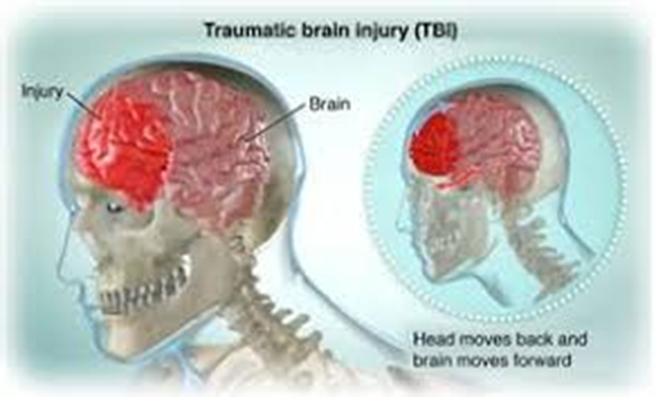Which risk factor for traumatic brain injury (TBI) should a nurse include in a discussion about prevention for a group of adolescents?

Falls occur more frequently in the younger population.
Females have twice the risk that males do.
Concussions in sports and motor vehicle accidents cause the largest number of TBIs in teens.
Most firearm incidents are accidental.
The Correct Answer is C
Choice A Reason:
While falls are a common cause of injury in children, they are not the leading cause of TBI in adolescents. Falls tend to be more frequent in the younger population, particularly in children under the age of 4. In adolescents, sports-related injuries and motor vehicle accidents are more prevalent causes of TBI.
Choice B Reason:
The statement that females have twice the risk of TBI compared to males is incorrect. National data reveal that males are at increased risk of TBI compared to females, especially in the adolescent age group. This is likely due to higher engagement in risk-taking behaviors and contact sports.
Choice C Reason:
Concussions in sports and motor vehicle accidents are indeed the leading causes of TBI in adolescents. Engaging in contact sports such as football, hockey, and soccer can lead to concussions, which are a form of mild TBI. Motor vehicle accidents are also a significant risk factor due to high-impact collisions that can cause head injuries.
Choice D Reason:
Firearm incidents are a serious concern for TBI; however, they are not the most common cause of TBI in adolescents. While firearm-related injuries can be severe and are a leading cause of TBI-related deaths, concussions from sports and motor vehicle accidents account for a larger number of non-fatal TBIs in this age group.
Nursing Test Bank
Naxlex Comprehensive Predictor Exams
Related Questions
Correct Answer is B
Explanation
Choice A Reason:
Tracheal sounds are harsh, high-pitched breath sounds typically heard over the trachea in the neck. They are not expected to be heard over the peripheral lung fields of a young adult during a routine lung auscultation.
Choice B Reason:
Vesicular breath sounds are the normal sounds heard over most of the lung fields. They are characterized by a soft, low-pitched, rustling sound during inhalation and are softer during exhalation. These sounds are created by air moving through the smaller airways such as the bronchioles and alveoli.
Choice C Reason:
Bronchovesicular sounds are heard over the major bronchi and are characterized by a moderate pitch and intensity. They are typically heard between the first and second intercostal spaces at the sternal border anteriorly and between the scapulae posteriorly, not over most of the lung fields.
Choice D Reason:
Bronchial breath sounds are high-pitched and louder than vesicular sounds, with a hollow quality, and are normally heard over the manubrium. If heard over the peripheral lung fields, they may indicate lung consolidation or other abnormalities.
Correct Answer is D
Explanation
Choice a reason:
Bronchovesicular sounds are normal breath sounds heard over the main bronchus area and over the upper right posterior lung field. They have a medium pitch and intensity and are heard on both inspiration and expiration. Bronchovesicular sounds do not involve the change of vowel sounds during auscultation.
Choice b reason:
Bronchophony is the term used when the voice sounds are more clear and louder over the chest wall, usually indicating lung consolidation. However, it does not specifically refer to the change of vowel sounds from "ee" to "ay."
Choice c reason:
Normal voice resonance is when voice sounds heard through auscultation are muffled and indistinct. It does not involve a clear change in vowel sounds, which is what occurs with egophony.
Choice d reason:
Egophony is characterized by the change of the "ee" vowel sound to a nasal "ay" or "a" sound when auscultating the lungs. This phenomenon typically suggests lung consolidation, as might be seen with pneumonia.
Whether you are a student looking to ace your exams or a practicing nurse seeking to enhance your expertise , our nursing education contents will empower you with the confidence and competence to make a difference in the lives of patients and become a respected leader in the healthcare field.
Visit Naxlex, invest in your future and unlock endless possibilities with our unparalleled nursing education contents today
Report Wrong Answer on the Current Question
Do you disagree with the answer? If yes, what is your expected answer? Explain.
Kindly be descriptive with the issue you are facing.
